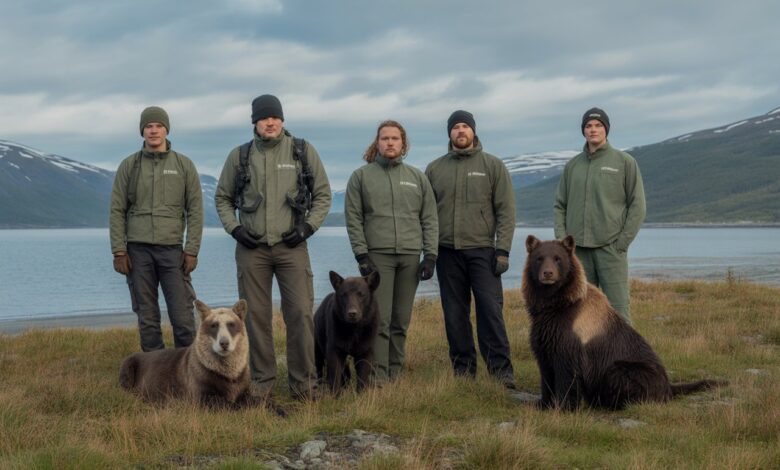Viltnemnda is a term that may seem unfamiliar to many, yet it plays a vital role in preserving wildlife and maintaining environmental balance. In Norway, where this concept originates, viltnemnda refers to a local wildlife committee that oversees the management of animal populations, hunting regulations, and other essential aspects of nature conservation. This article aims to explore viltnemnda, its functions, and why it’s crucial to the sustainable management of wildlife.
The Importance of Viltnemnda in Wildlife Management
The term “viltnemnda” can be roughly translated to “wildlife committee” in English. These committees are typically set up in different municipalities across Norway to regulate the management of wildlife. They help ensure that hunting practices are sustainable, that animal populations remain healthy, and that the local ecosystems are balanced.
A viltnemnda often includes a variety of stakeholders, including local hunters, biologists, government representatives, and environmentalists. Their main task is to make decisions that benefit both the wildlife and the local communities. This involves controlling hunting quotas, addressing animal-related conflicts, and enforcing laws related to wildlife conservation.
How Viltnemnda Helps in Sustainable Hunting
Sustainable hunting is a cornerstone of viltnemnda’s work. By carefully controlling the number of animals that can be hunted each season, the committees ensure that species are not overhunted and that populations remain stable. This approach prevents ecological imbalances, such as the overpopulation of certain species that can damage crops or cause other environmental problems.
Viltnemnda members often consult with biologists and wildlife experts to assess animal populations and environmental conditions. Based on this data, they set hunting limits that align with the overall health of the ecosystem. They also ensure that hunting is carried out responsibly and according to established regulations, protecting both wildlife and hunters.
Ensuring Biodiversity Preservation
Viltnemnda also plays an essential role in biodiversity conservation. By overseeing the management of different species, they help prevent the extinction of vulnerable animals. Additionally, the committees promote habitat preservation and restoration efforts to safeguard ecosystems that are critical for many species.
For instance, if a certain species begins to show signs of declining numbers, the viltnemnda may implement measures to protect that species, such as restricting hunting or setting up wildlife reserves. This proactive approach helps maintain the balance of various ecosystems.
Key Responsibilities of a Viltnemnda
One of the primary functions of viltnemnda is to regulate hunting activities. This includes establishing hunting quotas for different species, ensuring that hunters only take a sustainable number of animals from the population. These quotas are based on scientific data and population assessments to maintain biodiversity and ensure that species don’t become endangered.
Furthermore, viltnemnda is responsible for issuing hunting permits. These permits are not only a way to track hunting activity but also serve to ensure that hunters follow all local laws and regulations. The committee may issue specific permits for certain species or regions, depending on the conditions at the time.
Handling Animal Conflicts
In rural areas, human-animal conflicts can sometimes arise, particularly between agricultural interests and wildlife. For example, wild boars or deer might damage crops or fences. Viltnemnda can intervene in these situations, offering solutions such as compensations for damages or adjusting hunting quotas to reduce animal numbers in areas where they are causing harm.
Viltnemnda members work closely with farmers and landowners to identify problems early and implement humane solutions. This helps maintain peaceful coexistence between humans and wildlife.
Education and Public Awareness
Education is a key part of viltnemnda’s mission. The committees often organize public outreach programs to educate local communities about the importance of wildlife conservation and sustainable hunting. These programs help raise awareness of the ecological value of different species and encourage responsible behavior among hunters and the general public.
Viltnemnda also provides resources for hunters, such as training on wildlife identification, safety, and ethical hunting practices. This helps ensure that hunting is conducted responsibly and in accordance with local laws.
The Structure of Viltnemnda
The structure of a viltnemnda typically involves a range of individuals with diverse backgrounds. This ensures that decisions are made based on scientific data, community needs, and environmental considerations. Members of the committee often include:
-
Local Government Representatives: These individuals ensure that the decisions made by the committee align with municipal regulations and governmental policies.
-
Hunters: As direct stakeholders, hunters play a crucial role in understanding local wildlife conditions and ensuring that hunting practices are conducted responsibly.
-
Wildlife Experts and Biologists: These professionals provide scientific input on the health of animal populations, ecosystem conditions, and conservation efforts.
-
Environmentalists: Environmentalists bring a conservation-focused perspective to ensure that ecological health is prioritized.
Together, this group works to make informed decisions that consider both the immediate and long-term needs of the local environment.
Decision-Making Process
Viltnemnda committees generally meet several times a year to discuss ongoing issues and evaluate the state of local wildlife. During these meetings, members present reports on animal populations, hunting data, and environmental conditions. Based on these reports, decisions are made regarding hunting quotas, permits, and conservation strategies.
These decisions are made with input from all committee members, and transparency is key. By consulting local communities, government bodies, and scientific experts, viltnemnda can ensure that their actions are in the best interest of both the environment and local stakeholders.
The Role of Technology in Viltnemnda’s Work
With the advancement of technology, viltnemnda has improved its ability to monitor wildlife populations and track environmental changes. For example, GPS collars and wildlife cameras are often used to track the movement of animals, assess population health, and identify patterns of behavior.
Additionally, modern data collection tools allow viltnemnda to analyze trends in animal numbers over time, providing a more accurate picture of local ecosystems. This data can then be used to inform decisions regarding hunting quotas, species protection efforts, and land management practices.
Using Technology for Public Engagement
Viltnemnda also uses technology to engage with the public and keep people informed about their activities. Many committees have websites or social media profiles where they share information on upcoming hunting seasons, educational programs, and wildlife conservation efforts. This increased access to information helps build trust within the community and fosters a more collaborative approach to wildlife management.
The Challenges Facing Viltnemnda
One of the biggest challenges viltnemnda faces is climate change. Shifts in temperature, precipitation, and seasonal cycles can significantly impact wildlife populations and ecosystems. Warmer winters, for example, may alter migration patterns or change the availability of food sources for certain species.
Viltnemnda must adapt its strategies to account for these environmental changes. This might include adjusting hunting quotas, protecting vulnerable species, or implementing habitat restoration projects to support local wildlife in the face of climate stressors.
Balancing Human and Wildlife Needs
Another challenge is balancing the needs of local communities with the welfare of wildlife. As human populations grow and urbanize, the demand for land, resources, and hunting rights increases. Viltnemnda must navigate these competing interests, ensuring that conservation efforts do not harm the livelihoods of local residents while still prioritizing the health of the environment.
The Future of Viltnemnda and Wildlife Management
As the world faces increasingly complex environmental challenges, viltnemnda’s role in wildlife management will only become more critical. By promoting sustainable hunting practices, ensuring biodiversity conservation, and fostering public engagement, viltnemnda helps to maintain the delicate balance between human development and environmental preservation.
In the future, we can expect more collaborative efforts between viltnemnda and other organizations, both locally and globally, to address pressing issues such as habitat loss, species extinction, and climate change. With continued focus on education, technology, and community involvement, viltnemnda will remain a cornerstone of sustainable wildlife management in Norway.







